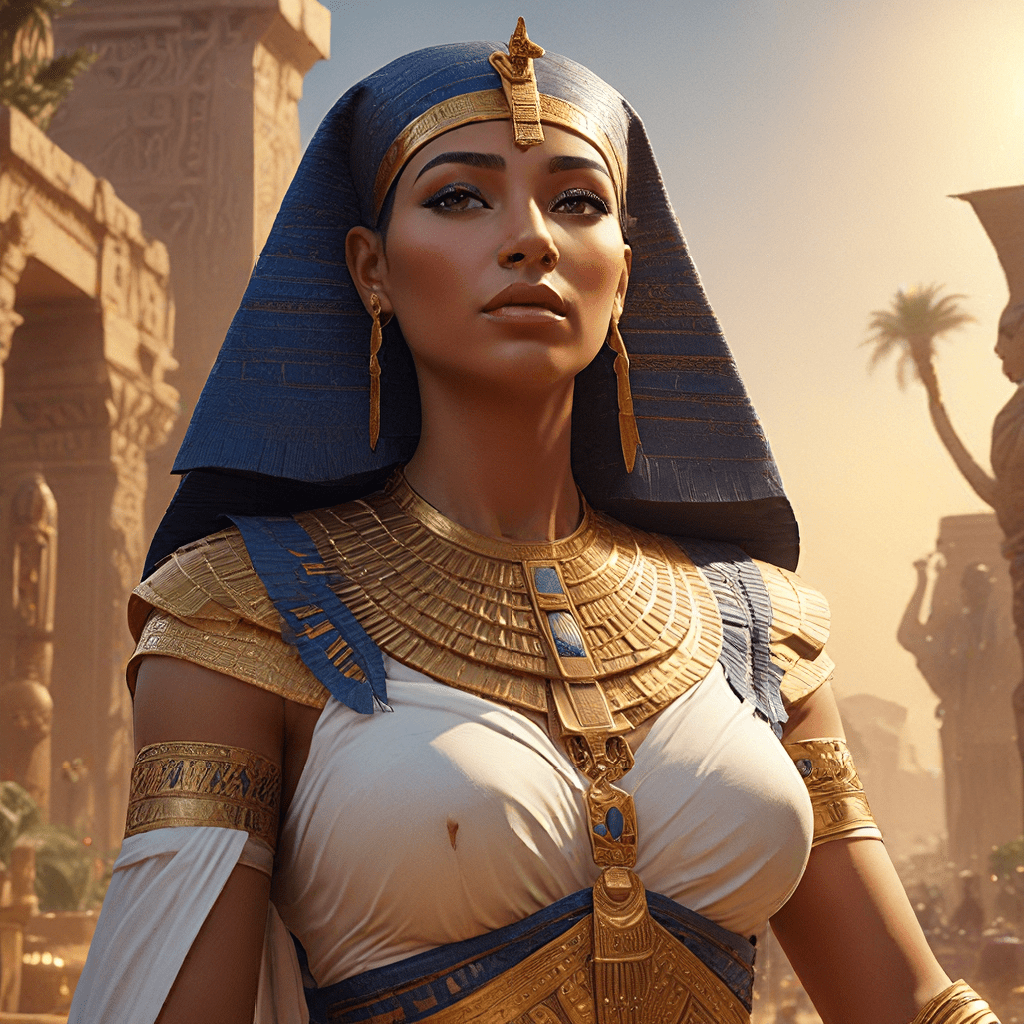## The Song of the Nile: A Journey to the Heart of the Egyptian Afterlife
1. Introduction: The Nile as Lifeline and Symbol
The Nile River, a majestic ribbon of life flowing through the heart of ancient Egypt, was far more than just a source of water. It was the very essence of their civilization, providing sustenance, connecting communities, and shaping their beliefs about the world and the afterlife. In the eyes of the Egyptians, the Nile was a divine entity, personified by the god Hapy, who embodied the river’s life-giving qualities and its connection to the cycle of rebirth.
The Nile’s influence extended beyond the physical realm. It became deeply entwined with Egyptian beliefs about death and the afterlife. The river’s annual flooding, a cyclical renewal of life, mirrored their understanding of the soul’s journey after death. The journey to the afterlife, much like the Nile’s flow, was seen as a passage to a new beginning, a transformation from the earthly realm to the divine.
2. The Journey Begins: From Life to Death
Ancient Egyptians believed that death was not an end, but a transition. They meticulously prepared for this journey, investing immense care into elaborate burial rituals. These rituals were not just for the body, but also for the soul, which they believed continued to exist after death as a “ka.” The “ka” represented the essence of a person, their personality, and their spirit.
To guide the “ka” on its journey to the afterlife, the deceased were buried with a collection of essential items, including food, jewelry, and most importantly, the “Book of the Dead.” This sacred text, filled with spells and prayers, served as a guide for the soul, offering protection and instructions for navigating the treacherous underworld. The “Book of the Dead” was a testament to the Egyptians’ belief that the afterlife was a place of both challenges and rewards.
3. The First Trial: The Weighing of the Heart
The first and most crucial test on the soul’s journey was the “Weighing of the Heart.” This dramatic scene took place in the Hall of Judgement, ruled by Osiris, the god of the underworld. Here, the deceased’s heart was weighed against the feather of Ma’at, the goddess of truth, justice, and cosmic order.
The heart symbolized the deceased’s actions and thoughts in life. If the heart balanced with the feather, it meant the soul lived a righteous life and was worthy of entering the afterlife. The soul would then be welcomed into the Field of Reeds, an idyllic paradise of eternal life. A heavy heart, however, meant a life of wrongdoing. It would be devoured by Ammit, a fearsome creature with the head of a crocodile, the body of a lion, and the hindquarters of a hippopotamus, representing the forces of chaos and destruction.
4. Navigating the Underworld: The Challenges
The underworld was a vast and mysterious realm, filled with dangers and challenges. It was a realm of darkness, where the deceased faced various trials and encounters, each testing their worthiness. One of the most significant challenges was the “Hall of Two Truths,” where the deceased had to declare their innocence before a council of gods. They had to prove they did not commit any sins during their life.
The journey through the underworld was perilous, but it was also a journey of transformation. The deceased encountered a variety of divine beings and mythological creatures, each representing different aspects of the afterlife. There were fierce guardians, benevolent deities, and enigmatic creatures, all playing a role in the soul’s journey. These encounters tested the deceased’s spirit, challenging them to confront their fears and weaknesses.
5. The River of the Dead: A Symbolic Passage
The Nile River, in its earthly form, was a source of life. In the realm of the afterlife, it transformed into the “River of the Dead,” a symbolic passage to the other side. This river represented the journey from the earthly plane to the divine, a transition from the known to the unknown. The deceased, guided by the “Book of the Dead,” had to navigate this river to reach their final destination.
The journey across the River of the Dead was often depicted as a voyage on the boat of Ra, the sun god. Ra’s boat sailed through the underworld, bringing light and hope to the deceased, assisting them in their passage. Crossing the River of the Dead signified overcoming the trials and challenges of the underworld and reaching a state of enlightenment.
6. The Field of Reeds: A Paradise Found
For those who successfully navigated the trials of the underworld, the final destination was the “Field of Reeds,” a paradise of eternal life and peace. This idyllic realm was a place of joy, abundance, and unity, where the deceased reunited with loved ones who had passed before them. The “Field of Reeds” was a symbol of the Egyptians’ enduring hope for an afterlife, a place beyond earthly limitations, where the soul could live in harmony and bliss.
The journey to the afterlife, as envisioned by the ancient Egyptians, was a profound and transformative experience. It was a journey of purification, a test of the soul’s worthiness, and a passage to a new beginning. The Nile River, a source of life in the earthly realm, became a symbolic guide for the soul’s journey to the afterlife, a testament to the Egyptians’ belief in a world beyond death, filled with hope, peace, and eternal life.




